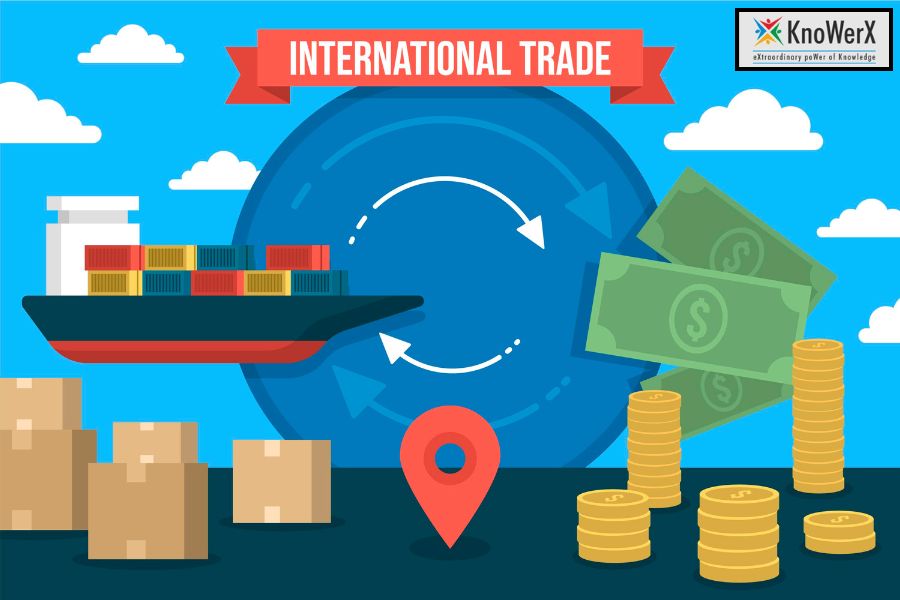How High Tariff Impact on Supply Chain Management

Trade War: How High Tariff Impact on Supply Chain Management Globalization has created deeply interconnected supply chains across the world. However, in recent years, rising trade tensions and retaliatory tariff measures have disrupted this harmony. One of the most prominent consequences of these conflicts is the High Tariff Impact that businesses face during a Trade War. For supply chain managers, procurement leaders, and business strategists, understanding these dynamics is no longer optional it’s an absolute necessity. At KnoWerX, we believe that professionals equipped with the right training and knowledge can transform these challenges into opportunities. With more than 32 years of collective experience in consultancy and education, our team has helped professionals in India and abroad strengthen their capabilities to deal with disruptions such as tariffs, inflation, and global trade conflicts. This article explores the multifaceted High Tariff Impact of a Trade War on supply chain management, while also offering strategies to mitigate risks and build resilience. Understanding the Concept of Trade War What is a Trade War? A Trade War occurs when nations impose tariffs or trade barriers on each other, typically in retaliation to protect domestic industries. While the intent is to boost local manufacturing, the result often spirals into higher costs, disrupted supply chains, and strained international relations. Why Trade Wars Matter for Supply Chains Modern supply chains span multiple continents. Raw materials may come from Asia, components from Europe, and final assembly in North America. When tariffs are imposed, the smooth flow of goods is disrupted, causing delays, cost escalations, and logistical challenges. The High Tariff Impact is therefore felt at every stage—from sourcing and production to delivery and customer satisfaction. High Tariff Impact: The Ripple Effect on Supply Chain Management The High Tariff Impact on supply chains goes beyond just higher prices. It creates a domino effect that touches every aspect of operations. Rising Production Costs Tariffs on imported raw materials drive up manufacturing costs. Companies face a tough choice: absorb the cost or pass it on to consumers. Supply chain managers are under immense pressure to optimize efficiency and reduce waste. Supplier Disruptions and Re-Evaluation Companies dependent on foreign suppliers are forced to re-negotiate or switch. In a Trade War, sourcing from tariff-affected regions becomes unsustainable. Businesses must develop supplier diversification strategies to reduce dependency. Inventory Stockpiling Challenges To avoid future tariff hikes, businesses often stockpile inventory. This ties up working capital and creates warehousing pressure. Ineffective inventory planning can lead to both overstock and shortages. Complex Logistics and Customs Delays High tariffs often bring stricter customs checks. Transportation costs rise due to new trade routes. Lead times extend, making supply chain forecasting harder. Shrinking Profit Margins Increased costs at every stage—from procurement to logistics—erode profits. Companies struggle to remain competitive in price-sensitive markets. India–U.S. Trade War: The Ongoing High Tariff Impact The recent escalation of the India–U.S. Trade War has created ripples across global supply chains. With the U.S. imposing tariffs of up to 50% on Indian exports—particularly in textiles, agriculture, and energy—the High Tariff Impact is already visible. Indian textile exporters, for instance, report a 50% drop in cotton yarn purchases due to higher costs, forcing the government to temporarily remove import duties on cotton to support garment manufacturers. Meanwhile, talks around a Bilateral Trade Agreement (BTA) have stalled, delaying much-needed relief for businesses caught in tariff crossfire. Economists warn that the combined effect of lost exports, weakening currency, and inflation could trim India’s GDP growth, while pushing companies to relocate manufacturing overseas. At the same time, India is exploring diversification strategies by strengthening trade ties with the EU, ASEAN, and even China, to cushion against the severe High Tariff Impact from the U.S. Case Studies: Trade War in Action The U.S.-China Trade War The U.S.-China Trade War is a textbook example of how tariffs can impact global supply chains. Tariffs on steel, aluminum, electronics, and automotive components forced companies to reconsider their sourcing strategies. American companies that relied heavily on Chinese imports faced severe High Tariff Impact, leading to supply disruptions and increased operational costs. The Brexit Example Although not always labeled as a Trade War, Brexit introduced tariff-like trade barriers between the UK and EU. Businesses experienced similar disruptions: higher costs, delays at borders, and the need to re-map supply chains. Strategies to Minimize High Tariff Impact Forward-thinking organizations do not just react—they prepare. Here are some strategies supply chain professionals can adopt: Supplier Diversification Avoid over-reliance on one country or supplier. Build a network of alternate suppliers across regions. Reduce vulnerability during a Trade War. Nearshoring and Local Sourcing Bringing production closer to home reduces exposure to tariffs. Though initial costs may be high, long-term savings offset the High Tariff Impact. Advanced Forecasting with Technology AI and predictive analytics help forecast tariff risks. Scenario planning ensures businesses are not caught off guard. Technology can simulate supply chain disruptions to test resilience. Strategic Inventory Management Balance stockpiling with lean inventory principles. Use advanced warehouse management systems for efficiency. Avoid tying up too much capital in goods. Training and Skill Development Supply chain professionals must stay updated with best practices. Training programs at KnoWerX help professionals adapt to new challenges. Certifications in supply chain management enhance decision-making during uncertain times. Building Resilient Supply Chains in a Trade War Era Resilience has become the cornerstone of modern supply chains. Businesses that survive a Trade War and manage the High Tariff Impact effectively are those that invest in building flexibility and agility into their operations. Key Elements of a Resilient Supply Chain Flexibility in Sourcing: Quickly shifting suppliers across regions when tariffs rise. Digital Visibility: Real-time tracking of goods and materials to forecast disruptions. Collaboration with Partners: Strong supplier and logistics partnerships ensure faster adaptation to changing trade policies. Risk Mitigation Planning: Scenario analysis to anticipate tariff hikes and create backup plans. By integrating resilience strategies, companies are not only reducing the High Tariff Impact but also gaining a competitive advantage in global markets. The Role of KnoWerX in Preparing Professionals At
